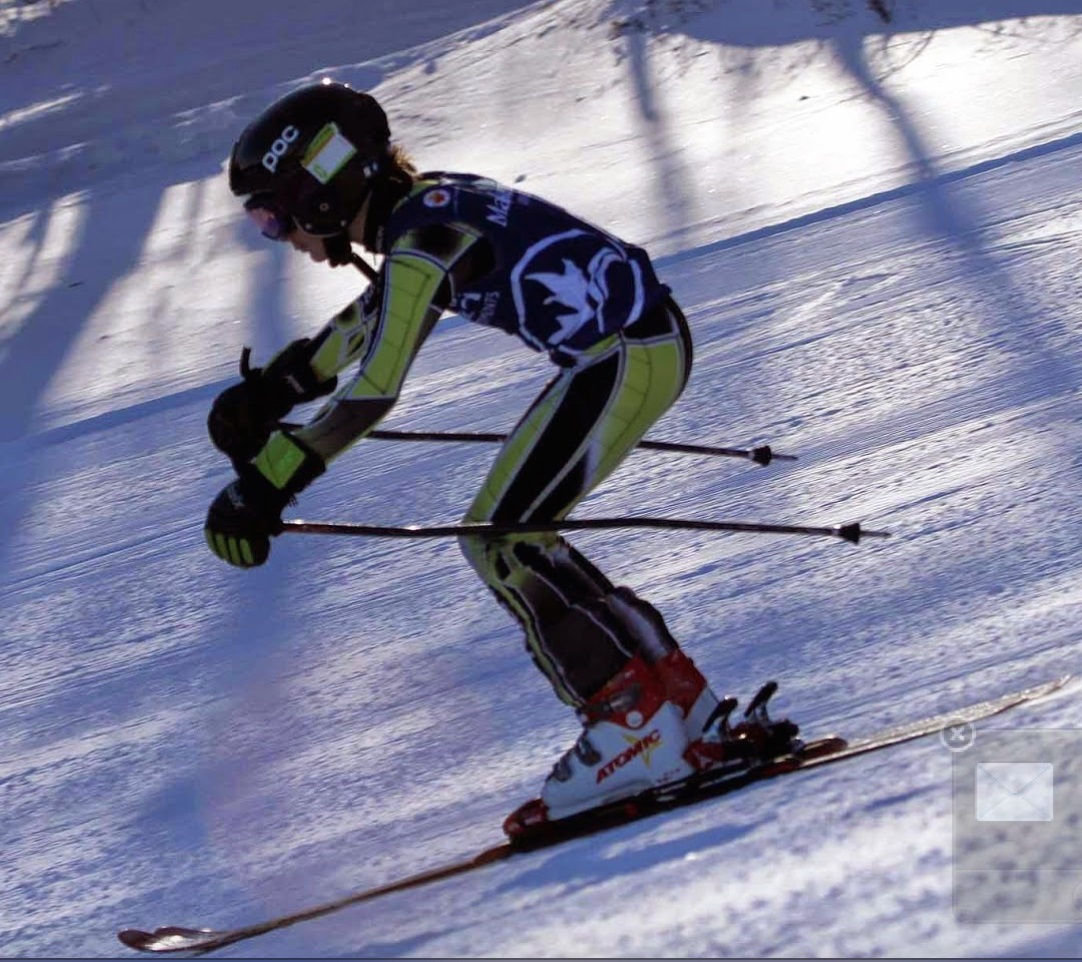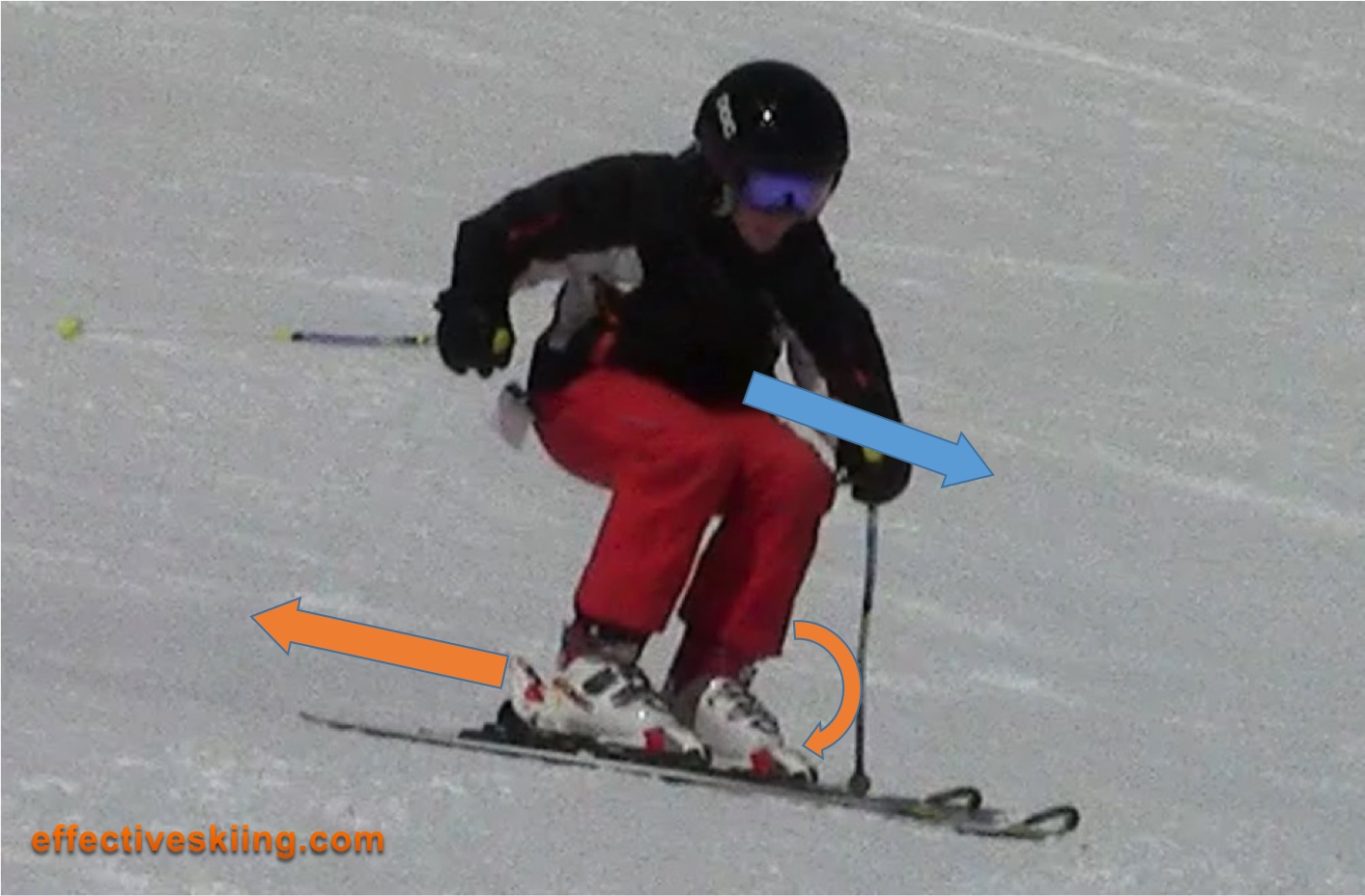Fore-aft
Pub
Share
Fore/aft balance and control makes for great fluid skiing, in dynamic balance and adaptable to all conditions, with instant line and turn shape control and more.

On green runs and relaxed skiing, we generally only need to stay on top of the boots, with small adjustments to maintain balance, while in more performance skiing and expert skiing, fore-aft movements become much more involved and required not only to maintain balance in the fore/aft plane but also to use different parts of the skis as needed (applying pressure), since in most turns, we need to roll pressure from forward on the skis (to engage the tips), to middle (to use the sweet spot), to slightly aft. There are several reasons for this, including:
-
engaging the tips of the skis early at the top of the turn
-
use of the sweet spot vs tips vs tails at different places in the turn
-
faster speed of the skis versus the body, as the skis go out to side and back under the body, while the body goes more straight down the hill
-
in performance skiing, slowing or accelerating the skis
-
Flexed release in performance skiing causes the skis to get somewhat ahead of the body
-
the terrain features / condition (bumps, rollers, clumps of snow etc)
Fore/aft movement has an ankle component, referred to as opening/closing the ankle or Dorsiflexion and plantarflexion - but it generally is seen as a complex movement (involving ankles, knees, hips, arms) of the body 1, to move the body forward or back, as the need may be, to maintain fore/aft balance.
See Keep your feet underneath you for a detailed session explaining the photo below:
Although generally seen as a movement along the skis, recentering is really a movement across the skis as well: as a skier moves towards performance skiing, the skis turn more and more across the hill, while the body travels more forward down the hill.
See recentering and Forward is down.
Timing
So, in general, we can say that in different phases of the turn, we need to be in a different place on the skis. Forward at the top, on the sweet spot at the fall line and letting them run at the end.
Note this ski being pressured aft at the end of the turn, although the skier appears to be forward (look at the snow spray):
While we could park and ride, say "park" the body on top of the middle of the ski and ride that "position" through the turn, it is more effective to use the parts of the ski as they were intended.
This fore/aft movement is more pronounced, the more performance we need from the ski. From cruising on easy groomers on top of the middle of the ski, to very fast GS turns on ice.
Upper body
We generally try to avoid "disturbing" the upper body - we avoid hunching excessively at the hips (which conversely moves the hips back). Although sometimes bigger adjustments are required, we generally adjust fore/aft balance just by moving the feet forward and back and this works best when the skis are unweighted.
Trying to push the hips forward also generates an often unwanted weighting of the skis (the only lever we have to actually move the hips being pushing into the skis).
Working against gravity
At the bottom of the turn, if we're forward, the skis will bend more and decelerate - great for speed control. If we finish more centered or even aft, the skis tend to accelerate, as they cross under the body.
Never back
Never get back on the skis. When you feel pressure on the heels, you're on the edge. By the time you feel the back of the boot, it is a little late. If you feel the tail of the skis, it is definitely too late!
Not even in powder. If you want to ski more centered in powder to let the tips rise, fine, but don't think "ski the tails".
Using parts of the ski
We generally need to bend the tips of the skis and make sure they start the groove in the snow that the rest of the ski will follow while carving. When the tips are bending, they also provide a shorter turn and speed control.
Using the Sweet spot of the ski when pressure is high, is important for great ski performance.
Often, at the end of the turn, in performance skiing, the skiers are slightly back temporarily (without being on the tails of the skis), while in ski racing, sometimes even the tails of the skis have a part to play.
Find the sweetspot
Modern recreational super-shaped skis do not require a lot of tip bending so, between being on the tails of the skis and being on the tips, there is a sweetspot, where recreational and expert skiers alike can spend most of the time during lazy runs or come back to during faster runs.
Here's one perspective on exploring fore/aft and finding the sweet spot: http://snowsportsculture.com/ski-tips-find-sweet-spot/
As the skiing gets more dynamic, on steeper slopes and higher speeds, the effort for recentering becomes higher as well.
Fore/aft and using the joints
To see more on this topic, you need a membership. (Basic)
Movements | discussion
See Skiing - a philosophy of movement for a detailed comparison of the different movement frameworks.
See also:
Sessions:
- Exploring fore-aft
- Recentering in fore-aft
- Fore-aft workout session
- Forward is down
- Getting forward
- Fore-aft and pressure
Drills:
References:
- NZSIA Manual, Skiing - a sport of movement 1
- Essentials of Skiing, p181 2
- How the racers ski, p39-40 3
You need to log in to post a comment!


